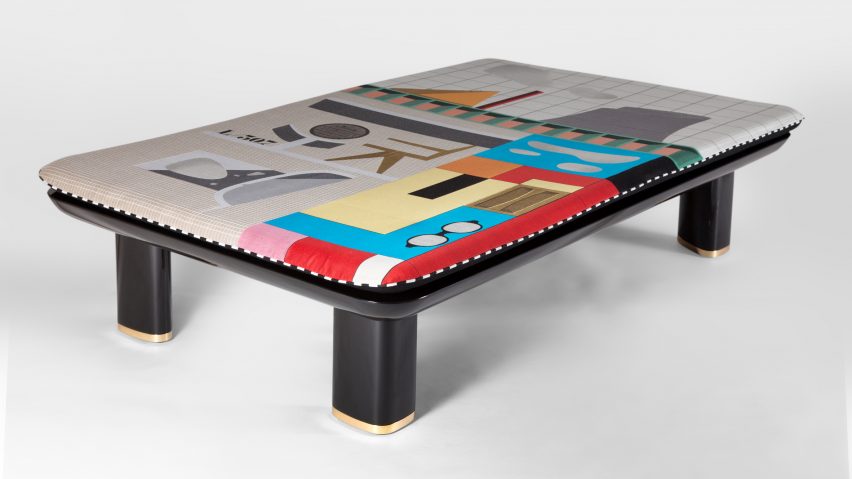
Doshi Levien pays homage to Le Corbusier's Chandigarh in furniture collection
London studio Doshi Levien has borrowed elements from the Le Corbusier-designed city of Chandigarh, India, to create a lamp and tapestry-covered daybed.
The furniture is part of the duo's Objects of Devotion collection, which they created for Galerie Kreo to celebrate Le Corbusier's contribution to India.
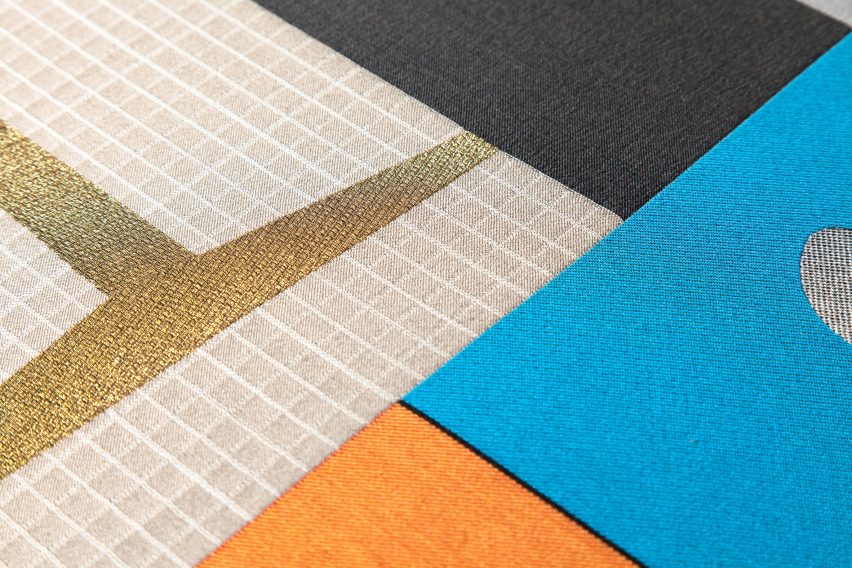
The architect created the masterplan for the city of Chandigarh and also designed six of its public buildings – architectural details of which feature in a colourful jacquard tapestry that covers the furniture.
"The daybed is really a collage of the architectural elements that make Le Corbusier," studio founder Nipa Doshi told Dezeen.
"If you look at the collage, you have the facade on top of the Secretariat Building and we've taken some of the shapes from the collages and tapestries he's made."
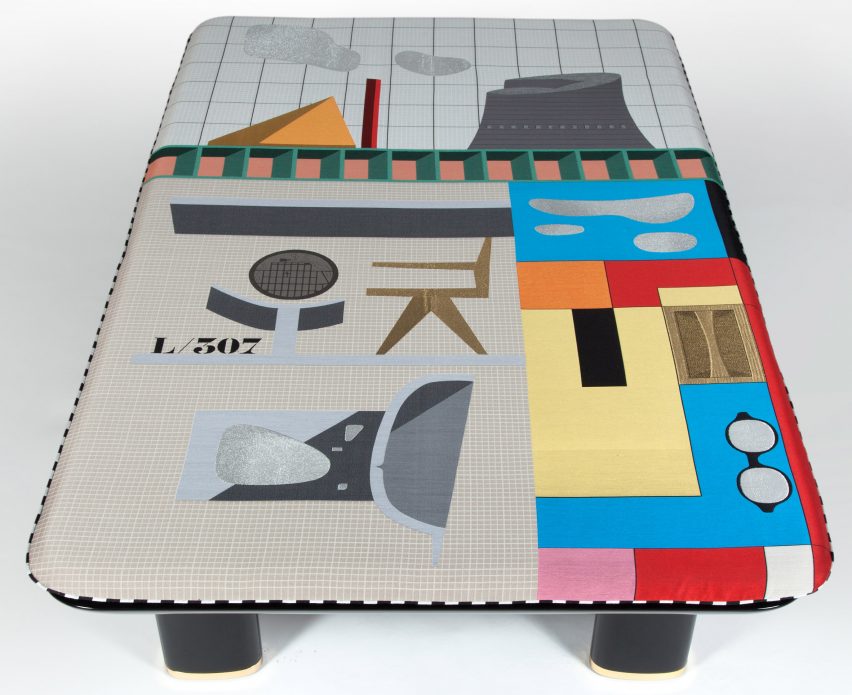
The furniture sits on four wide, solid legs that also pay homage to Chandigarh's Le Corbusier buildings – which were recently captured in a new set of images by Benjamin Hosking.
"The idea is that this architecture is very Brutalist and at the same time it was a vision for a new country," said Doshi. "It was the first and only city he designed in his life, and although these objects are loved by architects, they're not cared for very well."

"They're captured in black and white photos, removed from the context in which the city was built," she continued. "We wanted to create a series of objects as offerings of love to these buildings."
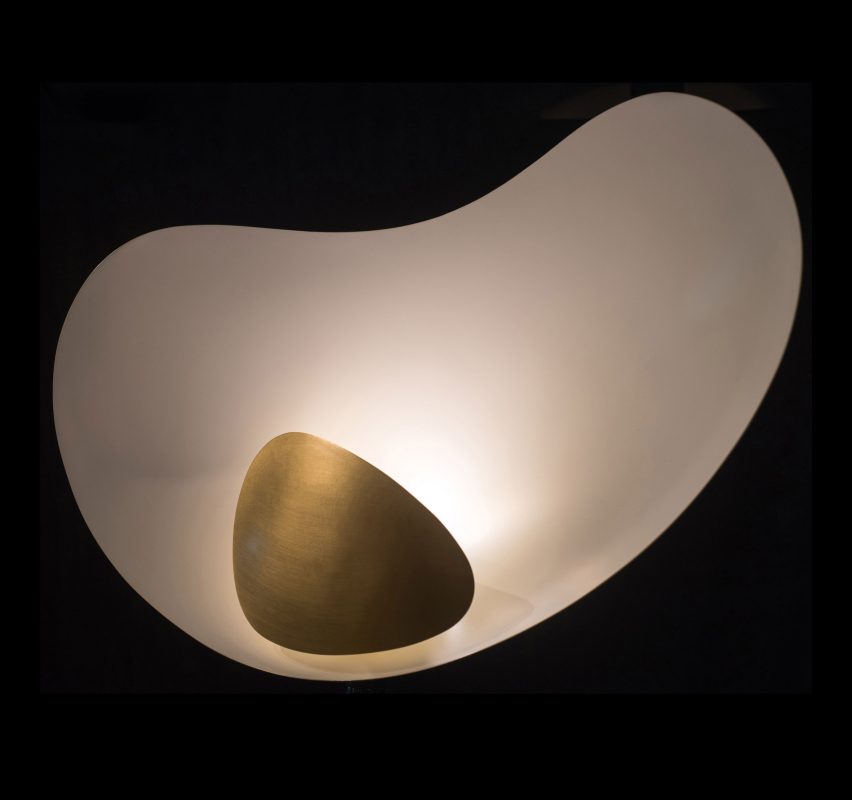
Le Corbusier's work has inspired everything from wooden tables designed by Jaime Háyon to the visual identity for a Polish film festival.
As part of the Objects of Devotion series, Doshi Levien also designed a metal floor lamp, which similarly features elements from the architect's buildings and tapestries.
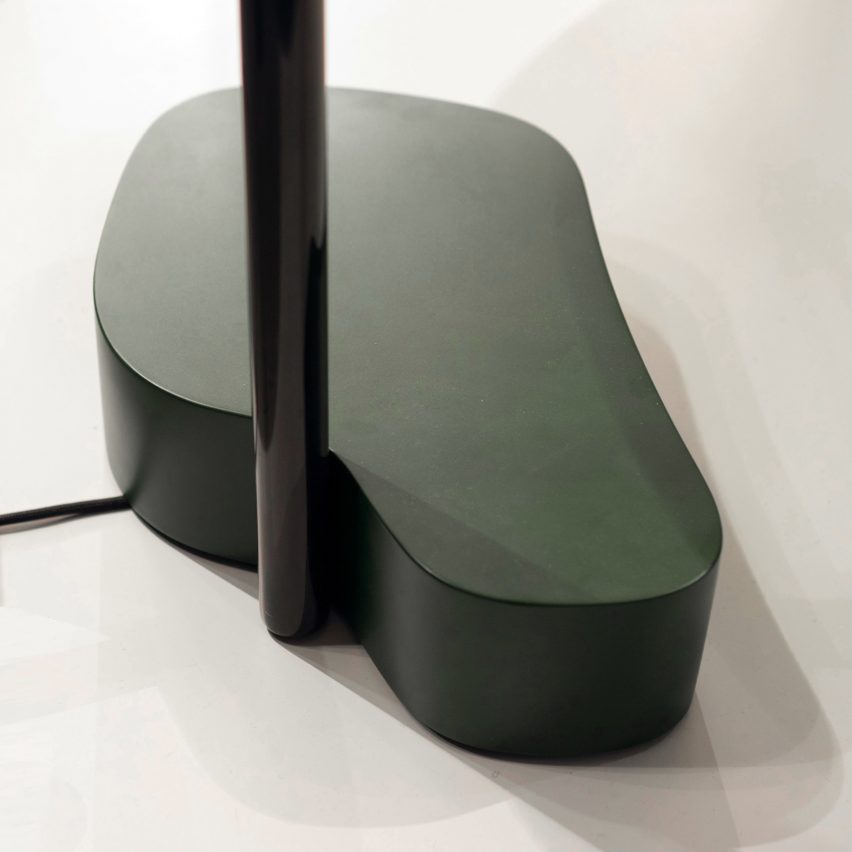
The bean-shaped shade – which echoes shapes in the daybed tapestry – is hand beaten, and the entire lamp was made by a vintage car restorer in England. A brass diffuser allows the owner to rotate the lamp to show a darker or lighter side.
"Modernist architecture is definitely part of my upbringing," added Doshi. "It's part of our mission to show that modernism really tried in countries you wouldn't expect it to."